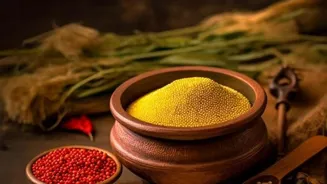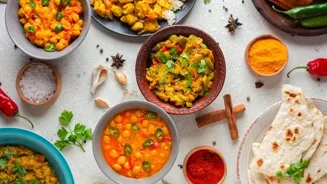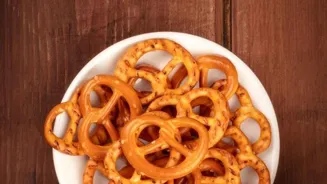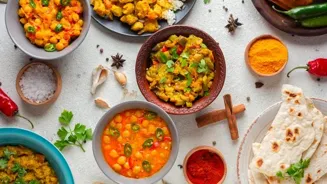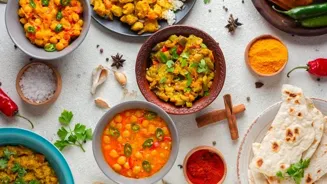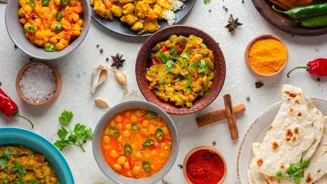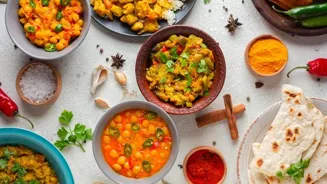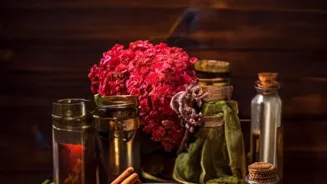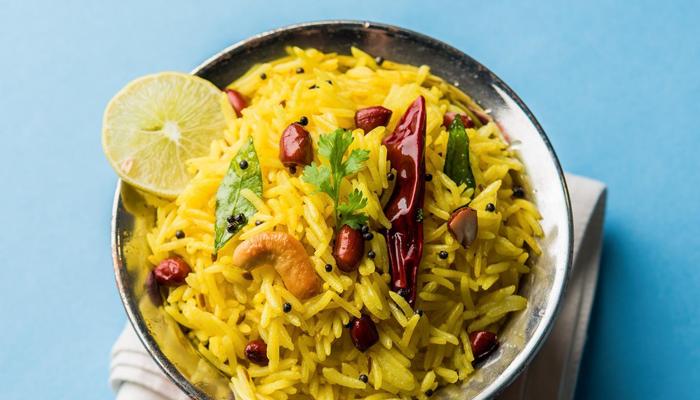Unravel the Rich Histories Behind 10 Iconic Indian Dishes! Discover the hidden stories & cultural exchange in each bite
India, a land of vibrant culture and diverse traditions, is also a culinary paradise.
But beyond the delicious flavors and tantalizing aromas, many of our beloved dishes hold fascinating stories that connect us to our past.
You might think you know your favorite Indian foods, but get ready to discover the hidden histories behind these 10 iconic vegetarian wonders!
Samosa's journey from Middle East to Indian street food
We all love a good samosa, that crispy, golden triangle filled with spiced potatoes and peas. But did you know its journey began far from the bustling streets of India? The samosa's ancestor, the 'sambusak', originated in the Middle East around the 10th century.
It travelled along trade routes to Central Asia and eventually made its way to India with the arrival of the Delhi Sultanate. Initially, it was a delicacy enjoyed in royal courts, filled with meat and dried fruits.
Over time, the humble potato replaced expensive ingredients, and the samosa evolved into the vegetarian street food we know and love today. Each bite carries a taste of history, a reminder of the cultural exchange that has shaped Indian cuisine.
Rajma chawal, a foreign bean turned Indian comfort food
Rajma chawal, the quintessential comfort food of North India, is surprisingly not Indian in origin! The kidney bean, or 'rajma', came to India from the Americas. Portuguese traders introduced these beans to India. However, it was only much later that the dish of 'rajma chawal' truly became popular.
The genius lies not just in importing the bean but in how Indians adapted it. They transformed it, using their own unique spice blends like garam masala, ginger, garlic, and tomatoes, to create a flavor profile that's distinctly Indian.
So, while the star ingredient might be foreign, the soul of the dish is completely desi. It's an example showing us how Indian chefs can easily take things from around the world and create a unique dish.
Gulab jamun: Persia to India, Mughal influence transforms sweet
Gulab jamun, those soft, melt-in-your-mouth balls of sugary goodness, are a staple at celebrations. Many might easily think this sweet is from our nation. However, this sweet has its roots in Persia!
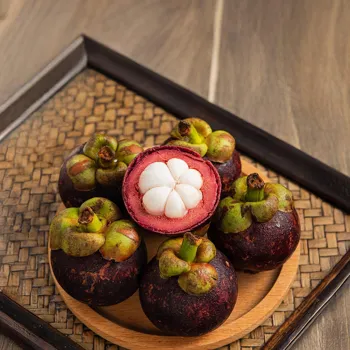
It's believed to have originated from a dessert called 'luqmat al-qadi', deep-fried dough balls soaked in honey syrup. The Mughals brought the recipe to India, and Indian chefs tweaked it by using khoya, or solidified milk, instead of dough.
They added rosewater ('gulab' means rose in Persian) to the syrup, giving it the distinct aroma that defines gulab jamun. These small spherical sugary treats show how the culinary landscape was reshaped during the Mughal rule.
Origin and uniqueness of South Indian idli breakfast
Idli, the fluffy steamed rice cake, is a South Indian breakfast staple. While its exact origin is debated, most historians believe it originated sometime in the 8th-12th century AD. Some suggest that it might have been derived from a similar dish from Indonesia.
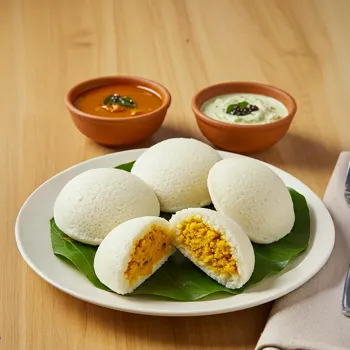
Kings who were from the Hindu kingdoms would travel a lot to Indonesia, and it is theorized that their cooks may have observed steaming techniques. However, the South Indian idli is unique to itself. Early versions are said to have been made with just urad dal and fermented overnight.
It has an identity on its own, with people eating it every morning. It does not have any close similarities to its contemporaries from Indonesia.
Jalebi's journey from the Middle East to India, evolving into regional variations
Jalebi, the swirly, fried, and syrup-soaked treat, is known by different names across India – jilapi, jilipi. Its history can be traced back to the Middle East. In Arabic cookbooks, a similar dessert called 'zulabiya' is mentioned as early as the 13th century.
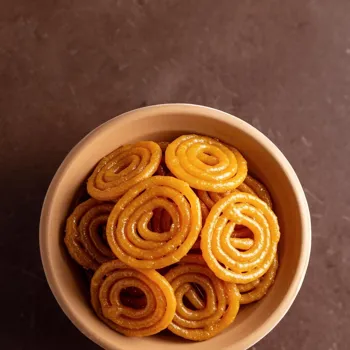
This sweet made its way to India, probably with traders and invaders. It quickly became a popular dessert, and regional variations emerged. Some are thin and crispy, while others are thick and chewy. It still continues till today; people swarm to sweet shops just to taste it.
Biryani's rich history from Persian roots to Mughal refinement
Biryani, a dish of layered rice, vegetables, and spices, is loved all over India, but it would not have the rich history it has cultivated for itself had it never been touched by Indian chefs. It is believed to have Persian origins. It was modified in the kitchens of the Mughal emperors.
The Mughals were known for their love of rich, flavorful food, and they elevated the biryani to a whole new level. They added saffron, nuts, and dried fruits, and developed different cooking techniques like 'dum pukht', where the biryani is cooked in a sealed pot over low heat.
These techniques gave the dish its unique aroma and flavour. It has so many variations that many claim each version is completely different from each other.
Naan: Staple Indian flatbread from Central Asia
Naan, the soft, fluffy flatbread cooked in a tandoor oven, is a staple accompaniment to many Indian dishes. Its origins can be traced back to Central Asia, where similar types of flatbreads have been consumed for centuries.
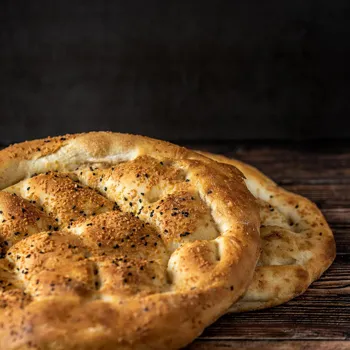
It is believed that it travelled to India with the Mughals, who introduced the tandoor oven. Over the centuries, naan has become an integral part of Indian cuisine. It perfectly mops up curries and adds a touch of warmth and comfort to any meal.
Kheer: Traditional Indian rice pudding, a cultural staple
Kheer, the creamy rice pudding, is the OG sweet treat. Kheer is more than just dessert; it's an important part of Indian culture. It is often prepared during festivals and celebrations and is considered auspicious. It is a favorite way to end a nice meal.
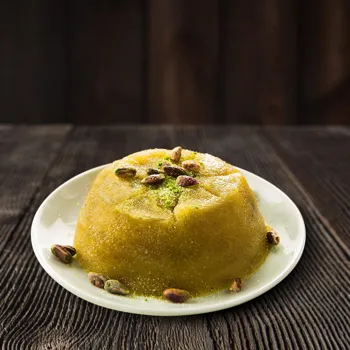
Crispy masala dosa: South Indian breakfast icon
Masala dosa, the crispy, savoury crepe filled with spiced potatoes, is a South Indian breakfast icon. It originated in Udupi, Karnataka, in the 20th century. It was a clever way to use leftover dosa batter and potato bhaji.
The combination of the crispy dosa and the flavorful potato filling was an instant hit. Now, it is a breakfast item that is on everyone's list. It has seen many variations throughout the years but remains a beloved item.
Pani puri, those small, crispy spheres filled with spiced water and potatoes, are a street food sensation. Its origin is believed to be in the region of Magadha, which is now modern-day Bihar. It has since travelled, with many regions having its own twists. It still remains a favorite snack, and everyone looks back on it fondly.
So, the next time you indulge in these beloved Indian dishes, take a moment to appreciate the rich history and cultural exchange that has shaped their unique flavors. Each bite is a taste of India's vibrant past, a connection to generations of cooks and culinary traditions.
It reminds us that food is more than just sustenance; it's a story on a plate!
AI Generated Content. Glance/InMobi shall have no liability for the content
